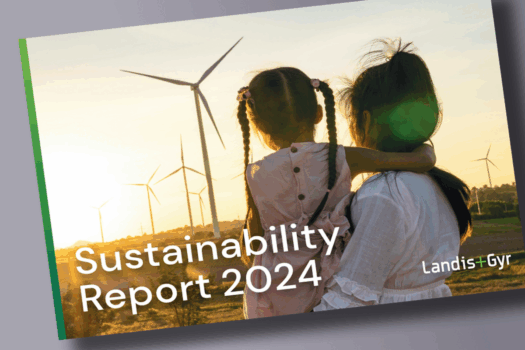We are used to receiving “non-financials” under the heading of “sustainability” as a kind of inferior annual report, a review of the previous business year. This common practice reveals much about the status of non-financials, and shows just how drastically a company’s non-financial performance is undervalued. Provided they are correctly integrated, non-financials make it possible to devise strategic goals and focus on creating long-term value .
Nowadays, sustainability is a key issue in the business world. The regulatory framework taking shape through the directive on corporate social responsibility set out by the EU, for instance, has made the issue unavoidable. Fortunately, the quality of reporting is improving, boosted in particular by the standards of the Global Reporting Initiative (GRI) and the International Integrated Reporting Council (IIRC), for example. The standards not only help make the variety of non-financial issues more concrete, but also create a basis for more comparability.
However, when you look at how the standards are applied, it often leaves the impression that only the surface has been scratched. Management often regards sustainable business practices as just one of many issues, not the issue. The question that we must seriously ask is whether the consistent alignment towards sustainable goals is viable as an integral part of the business model, and not just for the sake of image maintenance. We must also ask how this approach changes our conventional way of thinking, which is so quick to distinguish between supposedly soft and allegedly hard economic performance indicators.
Non-financial key performance indicators (KPIs) as proof of long-term value creation
A modern interpretation of sustainable management regards the company as a “value creation machine” that generates value in many different ways. Financial success is accompanied by value creation for customers, employees, society and the environment. Swiss Prime Site, the largest listed real estate company in Switzerland, uses this approach. The company’s sustainability report from 2017 applied the principles of «Integrated Reporting» based on the sustainability reporting guidelines outlined by GRI, which have been established for several years now .
This had various implications. First, the business model for Swiss Prime Site and its affiliated companies was defined as an “integral value creation model.” Second, the temporal viewpoint shifted, pushing a more forward-looking perspective concerned with establishing long-term goals to the forefront. For this, the company analyzed trends and classified opportunities and risks for future development. In this way, reporting has become an instrument for creative management. Lastly, a business model needs inputs to be able to effect outputs and ultimately make an impact. To this end, Swiss Prime Site employed the six forms of capital outlined by the IIRC standard: financial capital, manufactured capital (i.e. infrastructure), intellectual capital, human capital (i.e. employees), social and relationship capital (i.e. customers and stakeholders) and natural capital. For the first time, the report developed explicit KPIs for both the input and output of all Swiss Prime Site’s business areas. However, this process is by no means finished. The company intends to incorporate a mindset geared towards the forms of capital into its company culture as a control instrument, thereby sharpening the focus on success factors that are effective over the long term.
Non-financials as early indicators
Financial success is still the main focus. Non-financials often span a different time scale and, provided they are correctly integrated and connected, serve as leading indicators of financial success, which can only be measured at a later stage. That is obvious for things like customer and employee satisfaction. It is more difficult, however, when it comes to climate change. Swiss Prime Site established the long-term goal of contributing to lowering global warming to under two degrees. This science-based target means that the company must comprehensively analyze the CO2 emissions produced by properties in its real estate portfolio and the operations of its affiliated companies. Since this not only includes energy consumed directly by its properties, but also the supply chain and use by third parties, robust key performance indicators must be gradually established. At the same time, the company is assessing various climate change scenarios to determine the level of resiliency to environmental risks facing its real estate portfolio. Besides contributing to climate protection, the company must ensure that the properties can be used conveniently over the long term given the possibility of different climate scenarios — and it must be able to do so at reasonable financial outlay.
Integrated thinking as the foundation of adaptability
Swiss Prime Site manages sustainability and innovation within a single unit. This makes it possible to think about value creation in an integrated way. Take the following example: Swiss Prime Site began contemplating the cross-sectoral issue of climate change in 2019. In a series of innovation and acceleration workshops, participants developed and evaluated ideas for new services based on wide-ranging assumptions related to the adverse effects of global warming and the resulting health risks, potential regulatory requirements, etc. The various forms of capital were used to evaluate the ideas, and possible additional benefits and non-financial impacts were considered alongside the financial aspects. This strengthened the ability to anticipate emerging developments and to respond more quickly to possible changes; in other words, to improve the adaptability of the company.
Urs Baumann is Head Sustainability & Innovation and Head Development at Swiss Prime Site, the largest listed real estate company in Switzerland. The investment focus lies on first-class properties in prime locations as well as project and site developments in Switzerland.
The original text entitled “Vom Box Ticking zum Impact” by Urs Baumann and Dr. Stephan Lienin was published in issue 14 of The Reporting Times, the trade journal of the Center for Corporate Reporting (CCR).
Get in touch. We are happy to tell you more about it.






